Rings Of Saturn
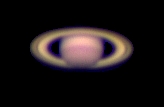 Saturn as imaged by Astro 16 students with the Sproul refractor and CCD camera, November 2000. (©2000 Elliot Reed, Stephanie Tonnesen, and Rabi Whitaker.) |
Saturn and its Rings
Saturn is observed to have a highly-structured ring system composed of small, individual particles. Historically, this has been rather puzzling, since the inner part of the ring system actually exists within the Roche, where tidal forces are stronger than self-gravitation. This presentation investigates one source of structure in the rings, namely the periodic perturbation of particle orbits by a larger satellite.Saturn's ring system.
Mimas
Mimas orbits Saturn at a distance of about 186*10^3 km, and has a mass of 4*10^19 kg. Because of it's significant mass and proximity to the inner rings, it can be considered the most important source of perturbative forces in the inner rings.
A perturbation map of planetary rings[PDF] presents a plausibility argument for the map used to generate the following figures.
The images were generated by ring_map_multi.pro. This program begins with 100000 points, initially distributed evenly between r0=Rs and r0=sigma (all at theta0 = 0), and iterates the mapping equations many times before displaying the final state of each point. A similar program, ring_map_multi_watch.pro, displays each state as it iterates.
Here are the positions of the particles after 100th iterations of the map equations with a=2000.
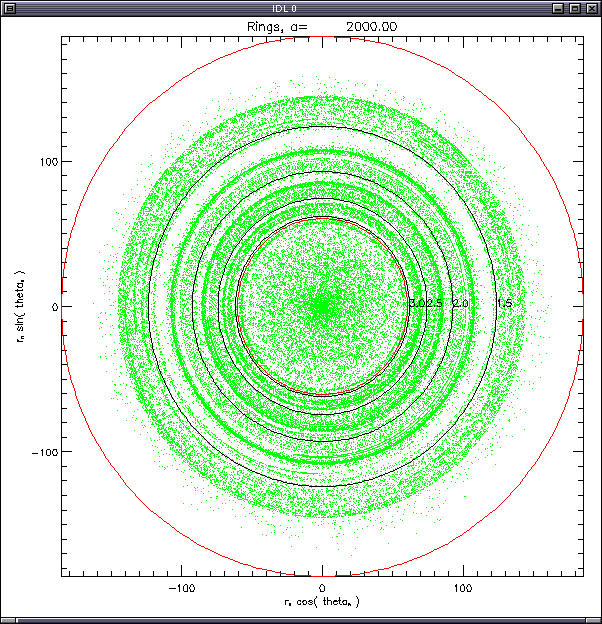
The outer red circle is of radius sigma, the inner red circle is of radius Rs, and the black circles are at sigma/1.5, sigma/2, sigma/2.5, and sigma/3.
And the 100th iteration with a=200.
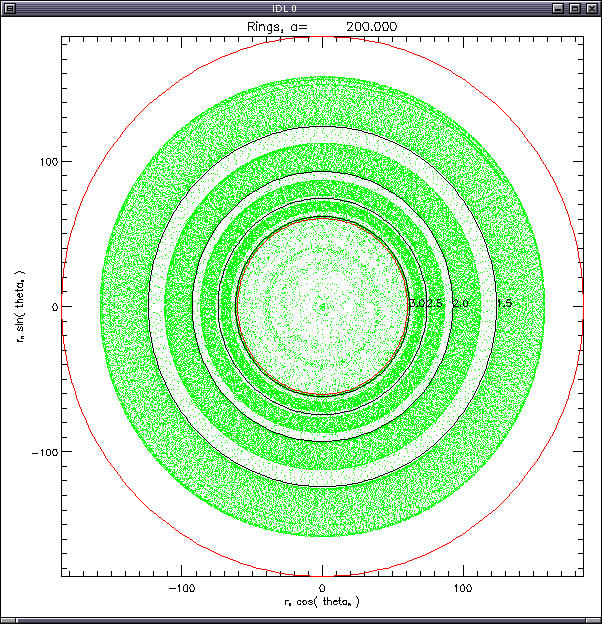
Note the close correspondence between regions of instability (the empty regions from which most of the particles have been removed) and fractional factors of the radius of Mimas's orbit. Any particle in one of these regions will feel a perturbing force that is periodically in the same direction, resulting in a net radial movement out of the region. This is called orbital resonance, and is also seen in the asteroid belt, where resonance with Jupiter creates similar radial structure and is probably responsible for preventing the formation of a planet from the material in the belt. The most prominent gap in Saturn's rings, the Cassini division, is in 2:1 resonance (r=sigma/2) with Mimas.
100th iteration,
a=20000
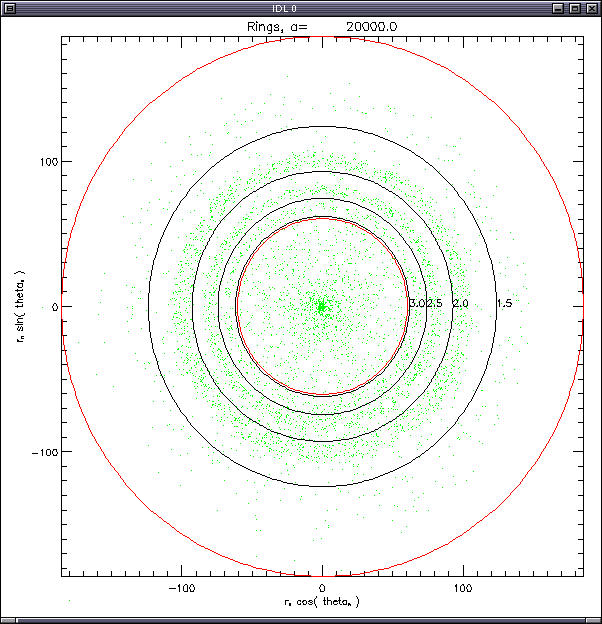
50th iteration,
a=20000
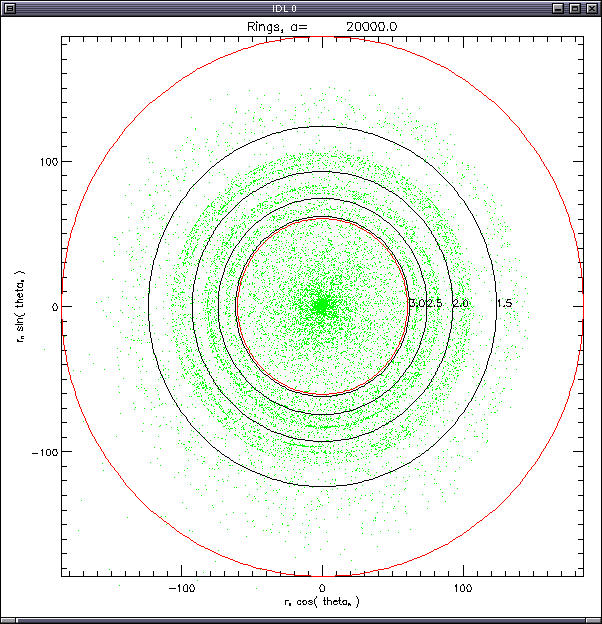
Other Processes
Obviously this is a very incomplete picture of the processes affecting ring formation. Some important effects we have ignored are
- Resonance with other periods of satellite motion - Saturn's oblate shape causes the period of vertical oscillations (above and below the equatorial plane) to differ from the orbital period. Particles in resonance with this period also experience a net radial force.
- Shepherding - two small satellites flanking a ring can serve to confine it through gravitational interactions.
- Magnetic fields, internal collisional interaction, radiation pressure ...
Two small moons shepherd Saturn's F ring.
Rings shaped by Shepard moons.